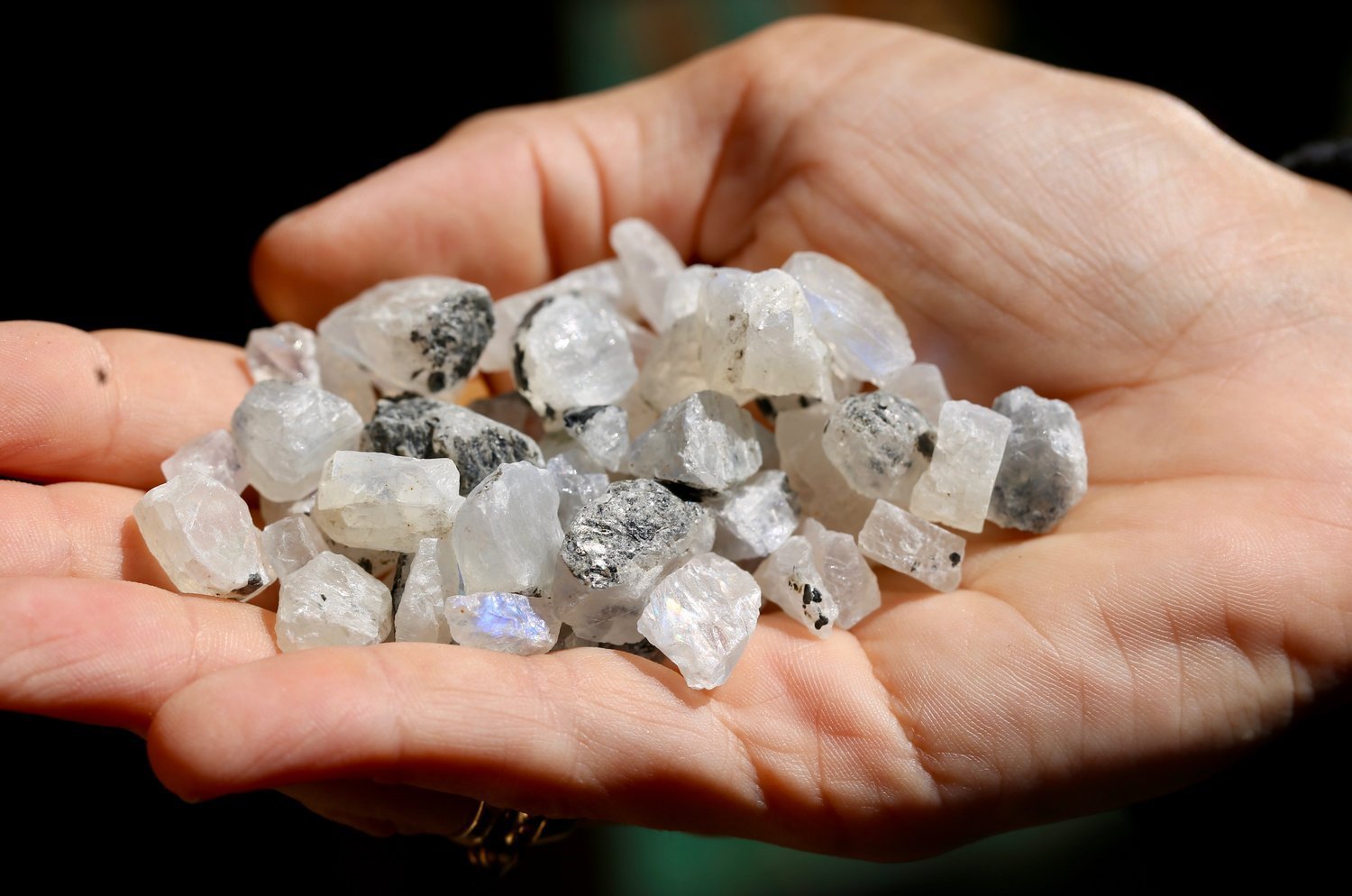
Rainbow Moonstone History & Meaning - The Lunar Gemstone
Rainbow moonstone is also known as white labradorite. While not a ‘true’ moonstone, rainbow moonstone is a Feldspar mineral. The name ‘labradorite’ referring to Labrador, Canada, where labradorite was first identified and can be found in large quantities.

Rainbow Moonstone Properties
Rainbow moonstone has a hardness of 6-6.5 on the Mohs scale, making it quite hard.
Moonstone History In Ancient Civilizations
For the ancient Romans, they believed that all moonstones were made from moonbeams and they associated the Moon with their goddess Diana.

The Ancient Greeks called all moonstones ‘Aphroselene’, combining the names of the goddesses of love (Aphrodite) and the Moon (Selene). The Sioux goddess of the Moon, Hanwi is also associated with rainbow moonstone.
The Ancient Hindus called moonstones ‘Chandranka’ (beloved of the Moon in Sanskrit) and also believed moonstone was made from moon-beams and came to earth after a battle between Lord Vishnu and the demon-god Bali.
In several mythologies and belief systems, rainbow moonstone is repeatedly linked with goddesses, the moon and/or ‘Divine Femininity’. Rainbow moonstone is therefore said to be used by Shamans and ordinary people, for boosting one’s intuition and obtaining spiritual guidance.

Resurgence With The Art Nouveau Era
He made some moonstone jewelry pieces for the stage-actress Sarah Bernhardt, an A list celebrity of her day.
A Favorite Of The Flower Child Movement

Where Is Rainbow Moonstone Found?
If you want to experience rainbow moonstone's glow for yourself, get your own unique piece of rainbow moonstone jewelry here.



